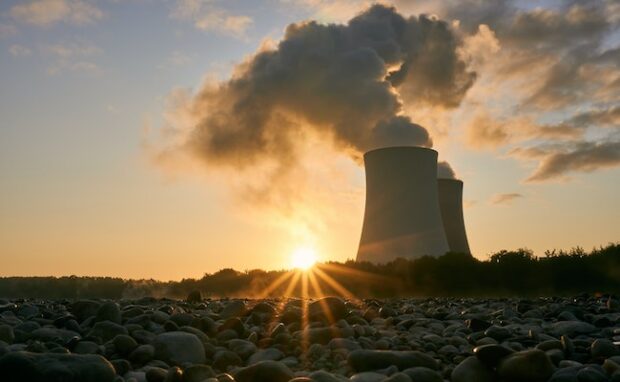Stanford paint can reduce energy use and your bills
Stanford University researchers developed a paint that can keep homes warm in winter and cool in summer. Consequently, homeowners could reduce their air conditioning usage and lower electricity bills. Yi Cui, the senior author of their study, said their discovery could curb greenhouse gas emissions and help third-world countries cool their homes.
This Stanford paint research seems boring compared to more popular innovations like ChatGPT. Contrary to popular belief, seemingly mundane inventions have significant impacts, too. For example, modern paints have no asbestos or lead, protecting many from potential lung disease. Pay attention because you may need this paint for your home soon.
This article will explain how this Stanford Paint works and why University researchers developed it. Then, I will discuss other ways people save on energy costs and the environment.
How does the Stanford Paint work?
Stanford University scientists Yi Cui, Xin Xiao, JIan-Cheng Lai, and Yucan Peng shared their findings online but did not have a specific name for their paint. Hence, I will refer to their discovery as “Stanford Paint.”
It consists of two layers: an infrared reflective bottom layer and an infrared transparent upper layer. The scientists created the former with aluminum flakes and the latter with inorganic nanoparticles.
The Stanford News Service says the infrared sunlight spectrum causes 49% of natural heating when surfaces absorb it. Consequently, the Stanford Paint’s dual-layer allows it to cool and warm homes, depending on the season.
Applying them outside your home enables the color layer to bounce infrared light to the lower layer. Then, it passes through the paint layers as light, preventing the wall from absorbing it.
As a result, building materials don’t accumulate heat, cooling your room. Moreover, applying both paints to your interior reflects light into your home, keeping it warm during the snow season.
The Stanford News Service reports it reflects near-infrared light to reduce the need for air conditioning further. Moreover, the research team confirmed Stanford Paint’s effectiveness by testing it in eight colors:
- White
- Blue
- Yellow
- Red
- Orange
- Green
- Dark Grey
- Purple
You may also like: How to save money on streaming services
Regardless of the color, the new paint type was 10 times better than ordinary paints in the same colors at reflecting high and mid-infrared light. More importantly, it can be useful beyond the home.
Yucan Peng, the study’s co-lead author, stated, “Both layers can be sprayed onto assorted surfaces of various shapes and materials, providing an extra thermal barrier in many different situations.”
For example, it could be the outer and inner layers of trains and trucks for refrigerated transportation. Moreover, Stanford Paint is perfect for third-world countries because it remains stable in humid environments.
What are other projects saving costs and the environment?
Two other developments have been helping save the environment and our budgets. The first is from University of Massachusetts researchers who found a way to turn humid air into electricity accidentally.
Professor Jun Yao said he and his colleagues only wanted to create an air humidity sensor. It consisted of microscopic tubes or nanowires one-thousandth the width of a human hair.
“To be frank, it was an accident. We were actually interested in making a simple sensor for humidity in the air,” Yao stated. “But for whatever reason, the student who was working on that forgot to plug in the power,” the professor added.
The UMass Amherst team felt surprised when they noticed water molecules generating electricity. They bumped inside the tubes, producing a minuscule charge.
“The beauty is that the air is everywhere. In principle, we can stack multiple layers in vertical space to increase the power,” Yao claimed. In other words, we might be able to turn humidity into a reliable and sustainable energy source.
The next project revisits nuclear energy as a carbon-free energy source. Japan says it will prolong the lifespans of its nuclear reactors and replace old ones.
You may also like: ChatGPT glasses guide wearers through interviews
The country’s new policy says nuclear energy has “an important role as a carbon-free baseload energy source in achieving supply stability and carbon neutrality.”
Moreover, nuclear power could help maintain its energy security. Japan’s nuclear policy paper warns, “There is a risk of an energy crisis for the first time since the 1973 oil crisis in the face of a severely tense situation.”
“We recognized once again the fragility of our country’s energy supplies, which poses a challenge to our energy security,” it added. It may seem dangerous, especially because Japan released radioactive water from nuclear reactors.
Conclusion
Stanford University researchers created a paint that keeps homes warm in winter and cool in summer. It could reduce air conditioning usage and help homeowners save money on electricity.
Yi Cui and the other scientists hope to improve their technology and commercialize it soon. A few more years of research and development could turn it into a household staple.
Other scientific breakthroughs could change the world, and you can learn more about them at Inquirer Tech. It also delivers the latest artificial intelligence, gadgets, and other digital trends.

